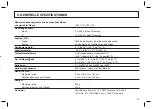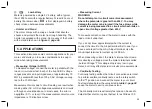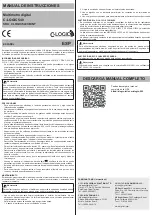
27
into the rear panel.
If you have used a multimeter before, simply examining
your meter will probably give you a good idea how to use
it. The following procedure is an overview of how to take
basic measurements.
WARNING
To avoid electrical shock or damage to the meter, do
not apply more than 1000 V between any termimal and
earth ground.
1. Insert the test leads in the appropriate input terminals,
see
table 1, page 43.
2. To turn the meter on and select a function, press the
ON/OFF button and then turn the rotary switch to the
appropriate switch position.
3. To take a measurement, use the test lead probes to
make the proper contacts. Remember, insert the meter
in the circuit in parallel for voltage and in series for
current measurements. Read the measurement on the
display.
4. To select the HOLD operation, press the HOLD button
above the rotary switch and press again to exit. The
annunciator
is displayed when the HOLD mode
has been selected.
Although this procedure will allow you to get started quickIy,
we suggest that you take the time to read the remainder
of this manual so that you can learn to take full advantage
of your meter‘s capabilities.
4. HOW TO UsE THE METER
This section describes your meter and how to use it. For
ease of reference, each description is numbered and keyed
to the illustration inside the front cover.
– Input terminals
Items 1 - 4 describe the input terminals.
See
table 1, page 43
for overload limits.
①
A
Amperes Input Terminal
For current measurements (AC or DC) up to 10 A conti-
nuous (20 A for 30 seconds) when function selector
switch is in the mA/A position.
②
mA
μ
A Milliamp/Microamp Input Terminal
For current measurements up to 200 mA (AC or DC)
when the function selector switch is in the mA/A or
μ
A
position.
③
COM Common Terminal
Return terminal for all measurements.
④
VΩ
Volt, Ohms, Continuity, Diode Test, Input Terminal
















































